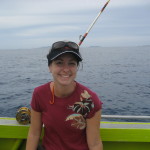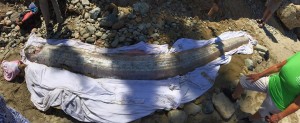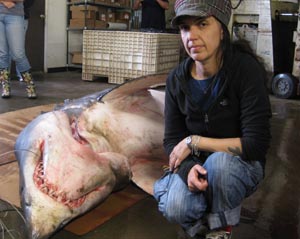 Dr. Misty Paig-Tran is Assistant Professor at California State University Fullerton. Her laboratory (Functional Anatomy, Biomechanics, and Biomaterials) studies how animals feed and move, among other things. Her research is focused on big filter-feeding animals (Sharks and Manta rays) and mid-deep water fishes – you know, the scary looking ones. You can learn about her research here, and you can follow her on twitter.
Dr. Misty Paig-Tran is Assistant Professor at California State University Fullerton. Her laboratory (Functional Anatomy, Biomechanics, and Biomaterials) studies how animals feed and move, among other things. Her research is focused on big filter-feeding animals (Sharks and Manta rays) and mid-deep water fishes – you know, the scary looking ones. You can learn about her research here, and you can follow her on twitter.
Today I sit at my computer totally aghast that the media seems to have gone into a frenzy once again about the latest oarfish that washed up on Catalina yesterday. I get it. I too, as a marine biologist and self-admitted fish nerd, get totally excited any time a cool fish washes up. And I get extra excited about the oarfish in particular. Of course I do, I am currently studying the fish in my lab at Cal State. What’s not to like? It’s huge, silvery, and looks like a dragon. Myths about this fish are old and salty. However, there has been a ton of misinformation printed about this fish and now it’s my chance to set some things straight. So I will try to rectify this now. Ahem.
Read More “Oarfish: The true tale of the fish we can’t seem to get enough of” »

